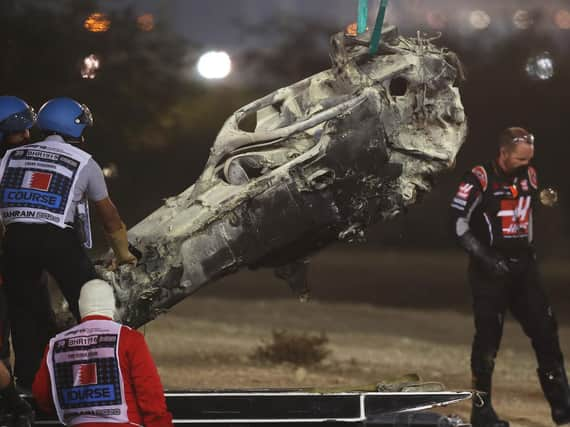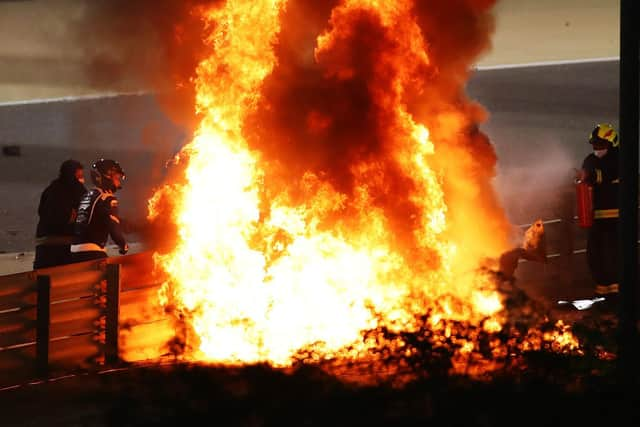Cranfield's work on F1's halo helped save Grosjean's life


F1 star Romain Grosjean's life was saved on Sunday by technology developed at Cranfield University.
The halo, commonly spotted in motorsport nowadays, was designed to protect drivers' heads and undoubtedly helped protect the Frenchman when his Haas tore through the barrier and burst into flames at the start of Sunday's Bahrain Grand Prix.
Advertisement
Hide AdAdvertisement
Hide AdThe device was tested extensively at Cranfield Impact Centre during development by the FIA, and has since become mandatory in F1 and in support series.
Speaking from hospital afterwards, Groasjean said: "I wasn't for the halo some years ago, but I think it is the greatest thing that we've got in Formula One, and without it I wouldn't be able to speak to you today."
Dr James Watson, Manager of the Cranfield Impact Centre – one of just two FIA-approved test centres in the world, used for crash-testing Formula One cars – said: “The halo device, along with other safety features on the latest F1 vehicles, has made a tremendous difference in protecting drivers in accidents. In the event of an accident, it is imperative to preserve the survival space around the driver and the halo device forms part of that critical zone.
“Prior to the introduction of the halo in 2018, we conducted compression tests on the device from various scenarios to establish its suitability. Static tests on the halo were taken to a load level that would be the approximate equivalent mass of five large typical SUV vehicles resting on the device. As with all safety devices in F1 vehicles, the halo is designed to reduce the risk of injury in as many accident types as possible.”
Advertisement
Hide AdAdvertisement
Hide AdClive Temple, Motorsport MSc Programme Director and Senior Lecturer at the Advanced Vehicle Engineering Centre, Cranfield University, said: “All of the ‘systems’ in the safety cell of a modern F1 car came into play in this one accident, from the driver’s fireproof clothing and head protection, head and neck support device, to the safety cell structure, impact structures, and, of course, the halo which was critical to Romain Grosjean’s survival."


Professor James Brighton, Head of the Advanced Vehicle Engineering Centre and Professor of Automotive Engineering, said: “Safety has been at the heart of our performance vehicle engineering for the last 50 years. When things go wrong at these high speeds, the consequences would be severe in the absence of the engineered solutions we have today. Many of our modern test standards began development decades ago in our Automobile Engineering department, now the Advanced Vehicle Engineering Centre.”